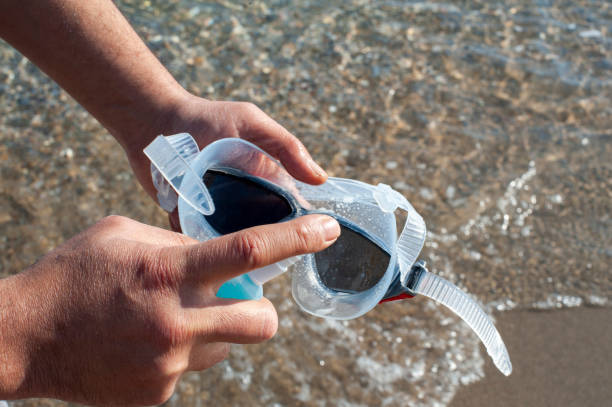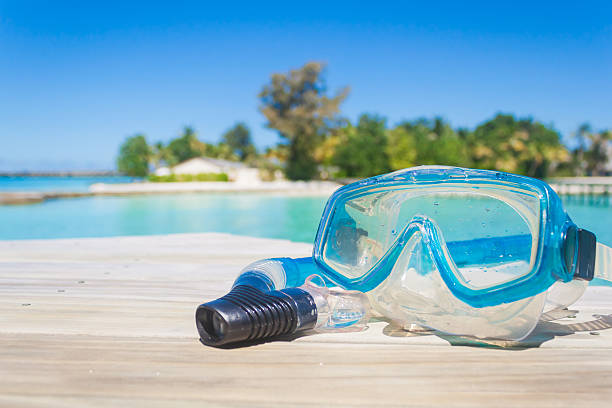Al nadar, usar un gorro de natación es mucho más que una simple declaración de estilo. Desempeña un papel crucial en tu rendimiento y comodidad en el agua. Entender cómo usar un gorro de natación puede marcar la diferencia. En este blog, profundizaremos en la importancia de usar un gorro de natación, te guiaremos paso a paso y hablaremos de sus diversos beneficios. ¡Descubre cómo este sencillo accesorio puede mejorar tu experiencia de natación!
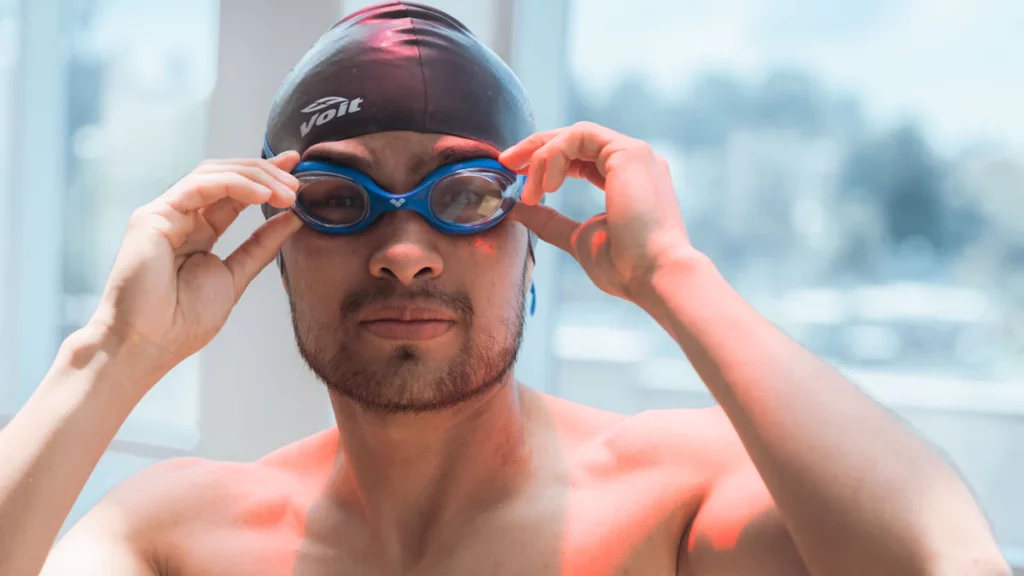
¿Cuánto ayuda un gorro de natación?
A gorro de baño Ofrece múltiples beneficios que muchos nadadores desconocen. Ya sea para proteger tu cabello, mejorar tu rendimiento en la natación o mantener la higiene en la piscina, un gorro de natación puede marcar una gran diferencia. A continuación, analizaremos en detalle sus funciones y beneficios.
Protege tu cabello.
Al usar un gorro de baño, no solo estás marcando tendencia. Su objetivo principal es proteger tu cabello de diversos elementos, especialmente del cloro. El cloro puede ser muy perjudicial para el cabello, resecándolo y quebradizo con el tiempo. Al usar un gorro de baño, creas una barrera entre tu cabello y el agua de la piscina, minimizando la exposición a estos químicos dañinos.
Además, si usas productos capilares como geles o aceites, un gorro de baño puede evitar que estas sustancias se mezclen con el agua de la piscina. Esto no solo ayuda a mantener la piscina limpia, sino que también evita que tus productos capilares se dispersen mientras nadas.
Mejora tu rendimiento en la natación.
Los beneficios de usar un gorro de natación van más allá de la protección capilar. En cuanto al rendimiento en la natación, cada detalle cuenta. Un gorro de natación puede ayudar a reducir la resistencia al moverse en el agua. Mejora la hidrodinámica al estilizar la cabeza, lo que permite un deslizamiento más fluido bajo el agua.
Para los nadadores de competición que buscan una ventaja competitiva, un gorro de natación puede proporcionarles una ventaja competitiva. Al minimizar la resistencia y mejorar la aerodinámica, pueden lograr tiempos más rápidos y mejores resultados en sus carreras.
Asegura la Higiene y Mantenimiento de la Piscina.
Además de los beneficios personales, usar un gorro de baño también contribuye a la higiene y al mantenimiento de la piscina. Mantener la piscina limpia es esencial para la salud y la seguridad de todos. Un gorro de baño evita que los pelos sueltos entren en el agua, reduciendo así el riesgo de obstruir los filtros o desagües.
Además, es fundamental seguir las normas de higiene en las piscinas públicas en cuanto al uso del gorro de baño. Al usar un gorro de baño, no solo cumples con estas normas, sino que también contribuyes a mantener un entorno de baño limpio y seguro para ti y los demás.
¿Cómo usar correctamente un gorro de baño? Guía paso a paso
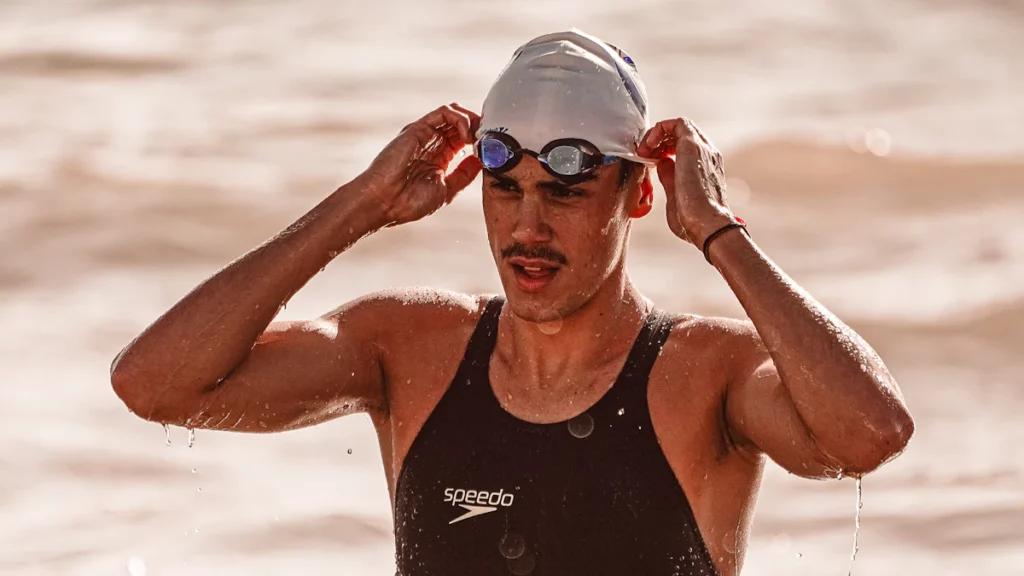
Usar un gorro de natación correctamente puede mejorar significativamente tu experiencia. Siguiendo unos sencillos pasos, puedes asegurarte de que se ajuste de forma cómoda y segura, protegiendo tu cabello y mejorando tu rendimiento en el agua.
Paso 1: prepara tu cabello
Empieza por mojarte el cabello, lo que facilita la colocación del gorro de baño y reduce las molestias. Si tienes el cabello largo, recógetelo en una coleta o moño para sujetarlo y evitar que se enrede.
El cabello mojado y recogido facilita mucho la colocación del gorro y garantiza un ajuste perfecto. Este paso inicial de preparación es crucial para una experiencia de natación cómoda y sin complicaciones, ya que el gorro protege mejor el cabello del cloro y otros productos químicos de la piscina.
Paso 2: Estira tu gorro de baño
Al estirar el gorro de natación, hágalo con cuidado para evitar tirones o enganches en el cabello. Un ajuste ceñido es esencial para la comodidad y la eficacia, pero no debería causar dolor. Use técnicas de estiramiento suaves, como estirar desde diferentes lados, para lograr un estiramiento uniforme sin ejercer demasiada presión en una zona. Este método ayuda a distribuir la presión uniformemente, facilitando la colocación del gorro con suavidad. Asegurarse de que el gorro esté correctamente estirado mejorará su ajuste y rendimiento en el agua.
Paso 3: Colocar la tapa
Coloca la parte delantera del gorro de natación sobre tu frente y tira suavemente hacia atrás hasta que cubra todo tu cabello. Asegúrate de meter los mechones sueltos para una máxima protección. Ajusta el gorro para mayor comodidad y seguridad, asegurándote de que el pliegue esté alineado con el centro de tu cabeza de adelante hacia atrás. Esta correcta alineación ayuda a que el gorro se mantenga en su lugar mientras nadas, brindándote un ajuste cómodo que no se mueve ni te distrae mientras estás en el agua.
Paso 4: Use gafas con gorro de natación
Muchos nadadores preguntan a menudo cómo usar las gafas de natación con gorro. Se suelen aplicar dos métodos. Para mayor protección y comodidad, considere usar las gafas con el gorro de natación. Usar las gafas debajo del gorro crea un ajuste seguro, evitando que el agua entre alrededor de los ojos y proporcionando un sellado hermético contra el cloro.
Como alternativa, usar gafas protectoras sobre el gorro ofrece mayor seguridad durante sesiones de natación intensas y facilita ajustarlas o quitarlas sin alterar el ajuste del gorro. Experimenta con ambos métodos para encontrar el que mejor se adapte a ti, mejorando tu experiencia de natación al proteger tu visión y cabello.
¿Cómo asegurar tu cabello debajo de un gorro de baño?
Sujetar el cabello bajo un gorro de baño puede ser un poco complicado, sobre todo si tienes el pelo largo o grueso, pero con unos sencillos pasos, puedes hacerlo facilísimo. Primero, empieza con el cabello mojado o húmedo; esto facilita su manejo y ayuda a que el gorro se deslice con suavidad. Si tienes el pelo largo, recógelo en un moño bajo o una coleta en la nuca. Trenzar el cabello también puede ser una forma eficaz de mantenerlo seguro y sin enredos.
A continuación, sostén el gorro de natación abierto con ambas manos, asegurándote de sujetar los lados sin usar las uñas para evitar rasgar la tela. Inclínate hacia adelante y coloca la parte delantera del gorro sobre tu frente. Al colocarte el gorro, usa los dedos para meter cualquier mechón o sección de cabello suelto dentro. Si tienes el cabello muy rebelde, considera usar un poco de acondicionador para que se mantenga en su lugar debajo del gorro.
Finalmente, una vez puesto el gorro, pasa los dedos por los bordes para asegurarte de que esté bien ajustado y que todo el cabello esté recogido. Ajusta el gorro según sea necesario para asegurar un ajuste cómodo sin bolsas de aire. ¡Con estos pasos, mantendrás tu cabello seguro y listo para nadar!
¿Cómo evitar que se caiga un gorro de baño?
Evitar que se caiga un gorro de natación puede ser un desafío, pero con algunos consejos estratégicos, puedes asegurarte de que se mantenga en su lugar durante toda tu sesión de natación. Aquí te explicamos cómo:
- Moja tu cabelloComience con el cabello húmedo o mojado. El cabello seco puede hacer que el gorro se deslice con mayor facilidad. El cabello mojado proporciona una mejor sujeción del gorro.
- Use un poco de acondicionadorAplicar una pequeña cantidad de acondicionador en el cabello puede ayudar a que el gorro se deslice con suavidad y se mantenga en su lugar. Asegúrate de no usar demasiado, ya que puede dejar el cabello demasiado resbaladizo.
- Posicionamiento adecuadoAl colocarse la gorra, inclínese ligeramente hacia adelante. Coloque la parte delantera de la gorra sobre la frente y estírela hacia atrás. Asegúrese de cubrir todo el cabello y de colocar la gorra uniformemente, sin bolsas de aire.
- Asegura tu cabelloSi tienes el cabello largo, recógelo en un moño bajo o haz una trenza antes de ponerte el gorro. Esto lo sujeta y evita que se salga.
- Elige la gorra adecuadaAsegúrate de usar una gorra que te quede bien. Debe quedar ajustada, pero no demasiado apretada. Hay gorras de varios tamaños, así que encontrar la adecuada para la forma de tu cabeza y el volumen de tu cabello es crucial.
- Compruebe si hay bolsas de aireDespués de colocar la tapa, pásela con las manos para comprobar si hay bolsas de aire. Alisarlas ayudará a mantener la tapa en su lugar.
- Método de doble tapaPara mayor seguridad, algunos nadadores usan dos gorros. Primero se coloca uno de látex y luego se cubre con uno de silicona. Este método proporciona mayor agarre y reduce la posibilidad de que el gorro se resbale.
¿Cómo debe ajustarse un gorro de natación?
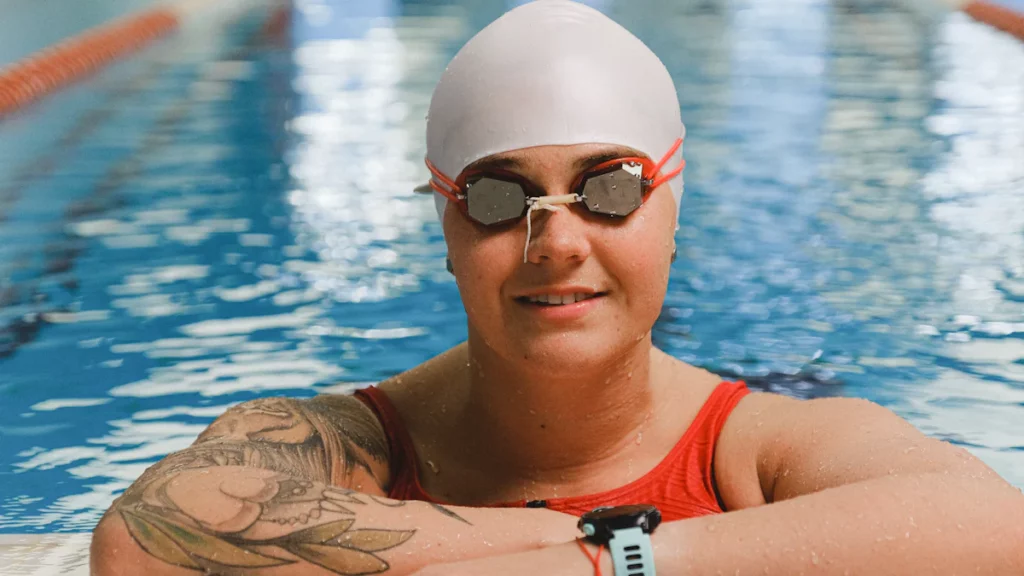
Un gorro de natación bien ajustado es esencial tanto para nadadores recreativos como competitivos. No solo mejora el rendimiento al reducir la resistencia, sino que también protege el cabello del cloro y otras sustancias químicas presentes en el agua de la piscina. Aquí tienes la opinión de un experto sobre el ajuste óptimo de un gorro de natación, respaldada por datos y hechos que subrayan su importancia.
Características clave de un buen ajuste
Los entrenadores de natación y los nadadores profesionales coinciden en que un gorro de natación debe ajustarse bien pero cómodamente, sin causar molestias ni dolor. Según el entrenador Richard Quick, reconocido entrenador de natación con seis medallas de oro olímpicas, un gorro de natación debe sentirse como una segunda piel. Debe cubrir todo el cabello y mantenerse en su lugar durante la natación intensa.
- Comodidad: Un gorro de natación debe quedar lo suficientemente ajustado como para mantenerse en su lugar, pero no tanto como para causar dolor de cabeza o dejar marcas profundas en la frente. Un ajuste ceñido minimiza la entrada de agua y reduce la resistencia, lo que permite nadar con mayor fluidez.
- Cobertura: La gorra debe cubrir completamente la línea del cabello, incluidas las orejas. Esto garantiza la máxima protección del cabello y ayuda a mantener la gorra en su lugar.
- Flexibilidad del material: Los diferentes materiales ofrecen distintos niveles de elasticidad y comodidad. Los gorros de silicona son populares por su durabilidad y ajuste ceñido, mientras que los de látex son más finos y flexibles. Los gorros de licra, aunque menos comunes en la natación de competición, ofrecen un ajuste cómodo, pero pueden permitir la entrada de más agua debido a su ajuste más holgado.
Consejos para garantizar un buen ajuste
Un estudio publicado en la revista Revista de Ciencias del Deporte Se analizaron los beneficios hidrodinámicos del uso de gorros de natación. El estudio reveló que quienes los usan experimentaron una reducción de la resistencia al aire de aproximadamente 3-4%. Esta reducción puede resultar en mejores tiempos de natación, especialmente en competiciones.
Además, una encuesta realizada por USA Swimming reveló que el 87% de nadadores de competición usa gorros de silicona debido a su excelente ajuste y comodidad. La encuesta también destacó que los nadadores que reportaron un gorro mal ajustado experimentaron un promedio de 0,5 segundos más de velocidad cada 50 metros, lo que subraya la importancia de un ajuste correcto. Aquí tienes algunos consejos para asegurar un buen ajuste:
- Pruebe diferentes tamaños y marcas: Los gorros de natación vienen en varias tallas y marcas, cada una con un ajuste ligeramente diferente. Probar varios puede ayudarte a encontrar el que mejor se adapte a la forma de tu cabeza y tipo de cabello.
- Practique la técnica de uso adecuada: Asegúrate de que tu cabello esté mojado o ligeramente húmedo antes de colocarte la gorra. Estírala suavemente y colócala desde la frente hasta la nuca, recogiendo los mechones sueltos.
- Ajuste según sea necesario: Una vez puesta la gorra, ajústela para eliminar cualquier bolsa de aire o arruga. Su superficie lisa reduce la fricción y mejora la comodidad.
Otros consejos y trucos para mejorar tu estilo
Para sacarle el máximo provecho a su gorro de natación y garantizar la máxima comodidad y rendimiento, existen estrategias adicionales que puede incorporar. Estos consejos y trucos pueden ayudarle a mejorar su experiencia general al usar un gorro de natación.
Elige la gorra adecuada
Un gorro de natación puede afectar significativamente tu experiencia al nadar. Un gorro demasiado apretado puede ser incómodo, mientras que uno demasiado suelto no se mantendrá bien puesto. Busca gorros etiquetados como "junior" o "adulto" y considera probar diferentes tallas para encontrar el que mejor se adapte a tus necesidades. Luego, piensa en lo que necesitas de tu gorro de natación. Aquí tienes 4 tipos de gorros de natación para satisfacer tus necesidades.
Gorros de natación de látex
Los gorros de natación de látex son populares porque son ligeros y se ajustan bien. Además, son bastante económicos. Sin embargo, pueden ser un poco difíciles de poner y podrían no ser la mejor opción para personas con alergia al látex.
Gorros de natación de silicona
Los gorros de natación de silicona son más gruesos y duraderos que los de látex. Ofrecen un ajuste perfecto y son menos propensos a romperse. Además, son más cómodos para sesiones de natación más largas, lo que los convierte en los favoritos de los nadadores habituales.
Gorros de natación de licra
Los gorros de natación de licra están hechos de tela, lo que ofrece un ajuste cómodo sin apretar la cabeza. No son tan eficaces para repeler el agua, pero son ideales para nadadores que priorizan la comodidad sobre el rendimiento.
Tapas de domo
Otra opción son los gorros de natación tipo domo, que ofrecen un diseño único que se diferencia de los gorros de natación tradicionales. Su forma de domo proporciona espacio adicional para el cabello y garantiza un ajuste seguro alrededor de la cabeza. Este diseño es popular entre los nadadores que buscan comodidad y estilo en su equipo de natación.
Mantenimiento de su gorro de baño
Cuidar tu gorro de natación es esencial para prolongar su vida útil y garantizar un rendimiento óptimo cada vez que te metas al agua. Siguiendo sencillos consejos de limpieza y almacenamiento, podrás mantener tu gorro en óptimas condiciones para muchos baños.
Consejos de limpieza
- Después de cada uso, enjuague su gorro de baño con agua fría para eliminar cualquier residuo de cloro o sal.
- Utilice un jabón suave o champú para lavar suavemente la gorra, evitando productos químicos agresivos que puedan dañar el material.
- Deje que la tapa se seque al aire por completo antes de guardarla para evitar la aparición de moho o hongos.
- Evite exponer su gorro de baño a la luz solar directa o a temperaturas elevadas, ya que esto puede provocar la decoloración o deformación del material.
Consejos de almacenamiento
- Guarde su gorro de natación en un lugar fresco y seco, alejado de la luz solar directa cuando no esté en uso.
- Evite doblar o arrugar la tapa, ya que esto puede provocar arrugas permanentes que afecten su ajuste.
- Considere usar una bolsa o estuche de malla para proteger su gorro de natación del polvo y los residuos cuando lo guarde con otros equipos.
- Inspeccione periódicamente su gorro de natación para detectar signos de desgaste, como estiramiento o adelgazamiento del material, y reemplácelo si es necesario.
Errores comunes que se deben evitar
Adoptar buenas prácticas al usar un gorro de natación es crucial para maximizar sus beneficios y garantizar una experiencia de natación cómoda. Si eres consciente de algunos errores comunes, podrás sacarle el máximo provecho a este accesorio esencial para la natación.
Posicionamiento incorrecto
Un error común entre los nadadores es llevar la gorra demasiado hacia atrás. Para un ajuste óptimo, coloque el borde delantero de la gorra justo por encima de las cejas antes de retraerla. Esto garantiza una cobertura completa y minimiza las molestias durante el nado.
No mojar el cabello
Antes de ponerse el gorro de natación, asegúrese de tener el cabello mojado. El cabello mojado facilita que el gorro se deslice suavemente sin tirones. Además, humedecer el cabello ayuda a sellar el gorro con el cuero cabelludo, evitando que el agua se filtre durante las sesiones de natación.
Conclusión
Los gorros de natación son cruciales en tu experiencia de natación, ya seas un nadador ocasional o un atleta de competición. Al aprender a usar un gorro de natación, puedes proteger tu cabello de químicos dañinos como el cloro y mantenerlo seguro mientras te deslizas por el agua. No se trata solo de estilo; se trata de rendimiento e higiene.
Experiencia personal:
- Como nadadora, siempre me aseguro de que mis hijos también usen gorros de natación. Necesitan acostumbrarse a esta práctica desde pequeños. Los gorros de silicona son nuestra opción preferida por su durabilidad y ajuste seguro.
- Usar un gorro de baño correctamente es fundamental para evitar que el cloro dañe tu cabello. Asegúrate de que todo tu cabello esté metido dentro del gorro y recuerda ponértelo sobre el cabello mojado para que te quede cómodo. Tener gorros de repuesto a mano siempre es una buena idea por si se te rompe el pelo.
- Para nadadores con poco o ningún vello, los gorros de látex ofrecen un ajuste excelente gracias a su elasticidad. Si el gorro de tamaño regular se siente suelto, considere probar un gorro infantil o juvenil para mayor comodidad.
Al usar gorros de natación, mantienes la piscina limpia y evitas que los pelos sueltos interfieran en tu sesión. ¡Imagina la facilidad de tus rutinas después de nadar sin tener que lidiar con el pelo mojado y enredado! Aprovecha los beneficios de los gorros de natación y disfruta de cada momento en el agua sin complicaciones.
Preguntas frecuentes
P1: ¿Qué tan ajustado debe ser un gorro de natación?
Un gorro de natación debe quedar lo suficientemente ajustado como para que no se resbale, pero no tan apretado como para causar molestias o dolor de cabeza. Puede que necesites varios intentos para encontrar el ajuste perfecto.
P2: ¿Los gorros de baño pueden provocar la caída del cabello?
Los gorros de natación no causan caída del cabello. Sin embargo, si están demasiado apretados o si se ponen y se quitan bruscamente, pueden causar rotura del cabello. Manéjelos con cuidado.
P3: ¿Cómo puedo evitar que mi gorro de baño se resbale?
Asegúrate de que tu cabello esté húmedo antes de colocarte el gorro y considera usar un poco de acondicionador para que se deslice con suavidad. Ajusta el gorro para eliminar las burbujas de aire y asegúrate de que esté ajustado, pero no demasiado apretado.
P4: ¿Hay gorros de baño para niños?
Sí, hay gorros de natación de varias tallas, incluyendo los más pequeños diseñados para niños. Busca gorros con la etiqueta "junior" o "kids" para un mejor ajuste a los nadadores más pequeños.
P5: ¿Puedo usar un gorro de baño con el pelo largo?
¡Por supuesto! Si tienes el pelo largo, considera trenzarlo o recogerlo antes de ponerte el gorro. También puedes buscar gorros de baño más grandes, diseñados para cabello largo.
P6: ¿Cómo atar el cabello para usar un gorro de natación?
Para sujetar el cabello y usar un gorro de natación, recógelo en una coleta baja o un moño en la nuca. Si tienes el cabello largo, trenzarlo también puede ser efectivo para mantenerlo seguro y sin enredos. Asegúrate de que el peinado sea compacto y plano para que sea más fácil de colocar debajo del gorro.
P7: ¿Cuál es el mejor peinado para llevar debajo de un gorro de baño?
El mejor peinado para usar debajo del gorro de baño es un moño bajo o una trenza. Estos peinados mantienen el cabello compacto y minimizan el volumen, lo que facilita usar el gorro de forma segura y cómoda, sin que se formen bultos ni bolsas de aire.
